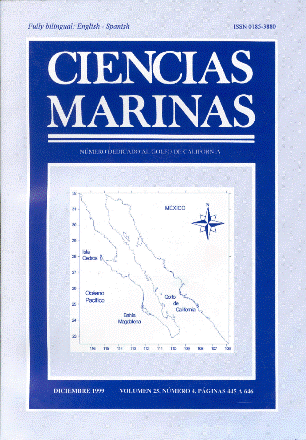Bimonthly Characterization And Behavior Of The Sessile Community Associated With The Rocky Littoral Of Bocachica, Tierra Bomba Island, Colombian Caribbean
Main Article Content
Abstract
A total of ten fixed transects were sampled at two-month intervals during one year at the rocky littoral of Bocachica, Tierra Bomba Island, Colombian Caribbean. The census technique used was the transect-chain method. The zonation pattern observed was similar to that of other Caribbean locations. The characteristic species of the mesolittoral were the vermetid Dendropoma corrodens and the sponge Tedania ignis. The characteristic species of the infralittoral were the corallinacea alga Peyssonnelia sp.and one undetermined species (morphotype 1). The other 54 species were less abundant and occasional. A disturbance factor was found consistent with the advance and withdrawal of the sand plane on thesublittoral, which clearly affected the width of the littoral zones. This perturbation had no correlation with rain or the current regime, but it had a weak one with substrate inclination. The relative fluctuation in the width of the zones was highest in the supralittoral and lowest in the mesolittoral. The spatial classification and ordination analyses of the transects showed a spatial pattern dependent on the differential grade of exposure to the wind and waves. This was particularly notorious in one of the steepest and most exposed transects. The temporal classification and ordination of the transects showed an ordered pattern of change clearly correlated with the sampling month. The monthly samplings corresponding to the rainy season (May to November) and the monthly samplings corresponding to the dry season (January to May) revealed two distinct groups. The last sampling month (May) was placed apart from the initial sampling month (May of the previous year), which suggests a cycle longer than one year.
Downloads
Article Details
This is an open access article distributed under a Creative Commons Attribution 4.0 License, which allows you to share and adapt the work, as long as you give appropriate credit to the original author(s) and the source, provide a link to the Creative Commons license, and indicate if changes were made. Figures, tables and other elements in the article are included in the article’s CC BY 4.0 license, unless otherwise indicated. The journal title is protected by copyrights and not subject to this license. Full license deed can be viewed here.

